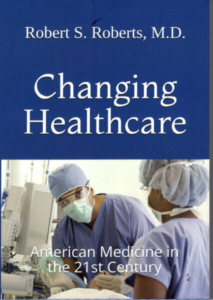Everyone believes drug prices are too high. Republicans and Democrats have argued for years over this issue. Democrats favor price controls, which usually lead to drug shortages, while Republicans favor market incentives, more authorization of generic manufacturers and Medicare Part D to help seniors pay for their drugs.
President Trump has just released his latest plan for lowering drug prices. Naturally, there is plenty of debate, even among conservatives, whether this plan will be helpful or harmful. Let’s take a moment to consider two points of view. But first, let’s describe the Trump plan.
The Trump Plan
Trump’s executive order bans drug-maker rebates in Medicare PartD. Drug makers negotiate rebates with pharmaceutical benefit managers (PBMs) in return for placement on formularies. Insurers use these rebates to lower premiums. However, the rebates also cause drug makers to increase their list prices, especially for products with fierce market competition like insulin. This is one reason many Americans have experienced sticker shock at the pharmacy counter in recent years.
The Trump plan also proposes benchmarking Medicare’s reimbursement rates for physician-administered drugs to an International Pricing Index (IPI); the average price paid by a group of industrialized countries. The order instructs the Health and Human Services Secretary, Alex Azar, to come up with a plan to test whether such a rule would reduce costs and improve outcomes. The order will be effective August 24th, unless the drug industry comes up with a “better plan” that Congress can enact.
The Trump plan also calls for specific lowering of insulin and epinephrine prices at Federally Qualified Health Centers (FQHCs).These centers are federally subsidized primary care clinics that serve lower-income or rural populations. Over 28 million Americans visit these clinics annually. FQHCs commonly participate in a prescription drug purchasing program known as 340B, under which providers can purchase drugs at deeply discounted rates.
Unfortunately, many providers, especially hospitals, take advantage of the 340B program to purchase drugs at low prices and then jack up the prices to patients, pocketing the difference. The Trump order ends this practice by ensuring that the prices charged to low-income uninsured patients align “with the cost at which the FQHC acquired the medication.”
Opposition to the Plan
The Wall Street Journal editorial board opposes the Trump plan. In a recent editorial they say his prescription for change is akin to what Democrats are offering: more government control. They oppose this plan because government actuaries last summer projected it would increase premiums and out-of-pocket costs for most participants. The Congressional Budget Office (CBO) forecast the change would increase federal spending by $177 billion between 2020 and 2029.
They oppose allowing drugs to be imported from foreign countries because generics are already far cheaper in the U.S. than in Canada, and importing more expensive biologic products presents in their words, “non-trivial safety risks.” They say many novel therapies in the U.S. aren’t available in Canada because of government price controls. The same is true of most countries.
They expressed concern about the availability of new treatments if prices are reduced by government intervention. They quote the Galen Institute which reports 96% of new cancer therapies are available in the U.S. compared to 73% in Germany, 66% in France and 54% in Japan. Government price controls in the U.S. they say will reduce drug-maker spending on research and development, especially in fields like Alzeheimer’s, where experimental therapies have met with little success.
They also express fear of giving up the lead in innovation to China, which has been pouring billions into gene therapies and oncology drugs. They fear that the U.S. could become dependent on China for cancer drugs just as we are now for some antibiotics.
Lastly, they are concerned that this plan will reduce competition which is crucial to lowering prices and increasing the availability of drugs. They cite competition as the main factor responsible for consumer out-of-pocket spending staying roughly flat since 2002 even as insurance spending has tripled. They say prescription drug prices actually fell overall by 1% in 2018, the first decline since 1973.
(Next post: Support for the Trump executive order.)

